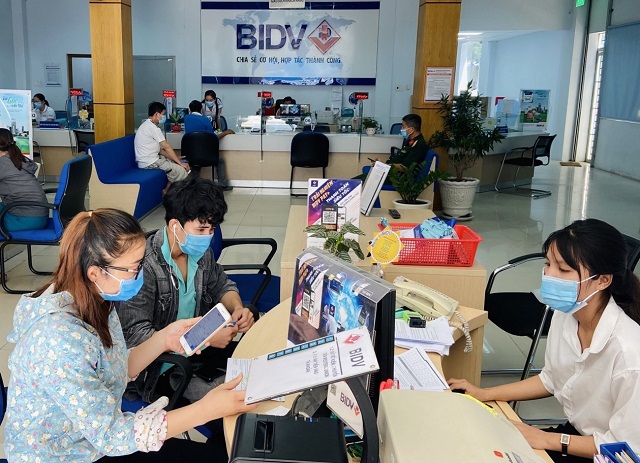Central Bank warns of risks in real estate lending
Credit demand has been on the rise in the first half of the year and is set to maintain its growth momentum for the second six months.
Credit risks are expected to be a major issue in the last six months of this year with growing demand for bank loans in the fields of real estate, insurance, and securities.
| Customers at a BIDV Bank in Hanoi. Photo: Quoc Viet |
The State Bank of Vietnam (SBV) made the remarks in its June survey on the credit trend of banks, saying the risk is forecast to decline in 2022 in case the pandemic control improves.
The survey noted for the first six months of the year, 38 banks and credit institutions had met 100% of credit demands from customers, or 44.9% of the total, which is also the highest rate in the past four years.
Meanwhile, the rate of banks meeting “75-100%” of customer’s demands remained at over 90%.
“Overall, credit demand has been on the rise in the first half of the year, and is set to maintain its growth momentum for the second six months in every group of sectors, maturity period, and fields,” stated the SBV.
According to the central bank, only credit in fields of tourism has suffered a decline in the January-June period, however, it is set to slightly recover in the remaining months.
The survey stated banks have also readjusted their expectation for credit growth in 2021 in fields of construction, tourism, transportation, trade, electricity distribution, housing, supporting industries, and hi-tech investment.
The SBV also informed for the final half of 2021, the majority of banks have expressed their intention of easing credit policies for all groups of customers and in priority fields, especially small and medium enterprises.
Meanwhile, credit into high-risk fields such as securities, real estate, banking, insurance, and tourism is expected to stay tight.
The survey revealed three fields including wholesale, retail; export-import; and consumer finance continue to be the main driving forces for credit growth in the first half of 2021, and would remain so until 2022.
As of June 21, Vietnam’s credit growth stood at 5.47%, significantly higher than the 2.45% rate recorded for the same period of last year. This year, the SBV targets credit growth of 12%, slightly unchanged from last year.












